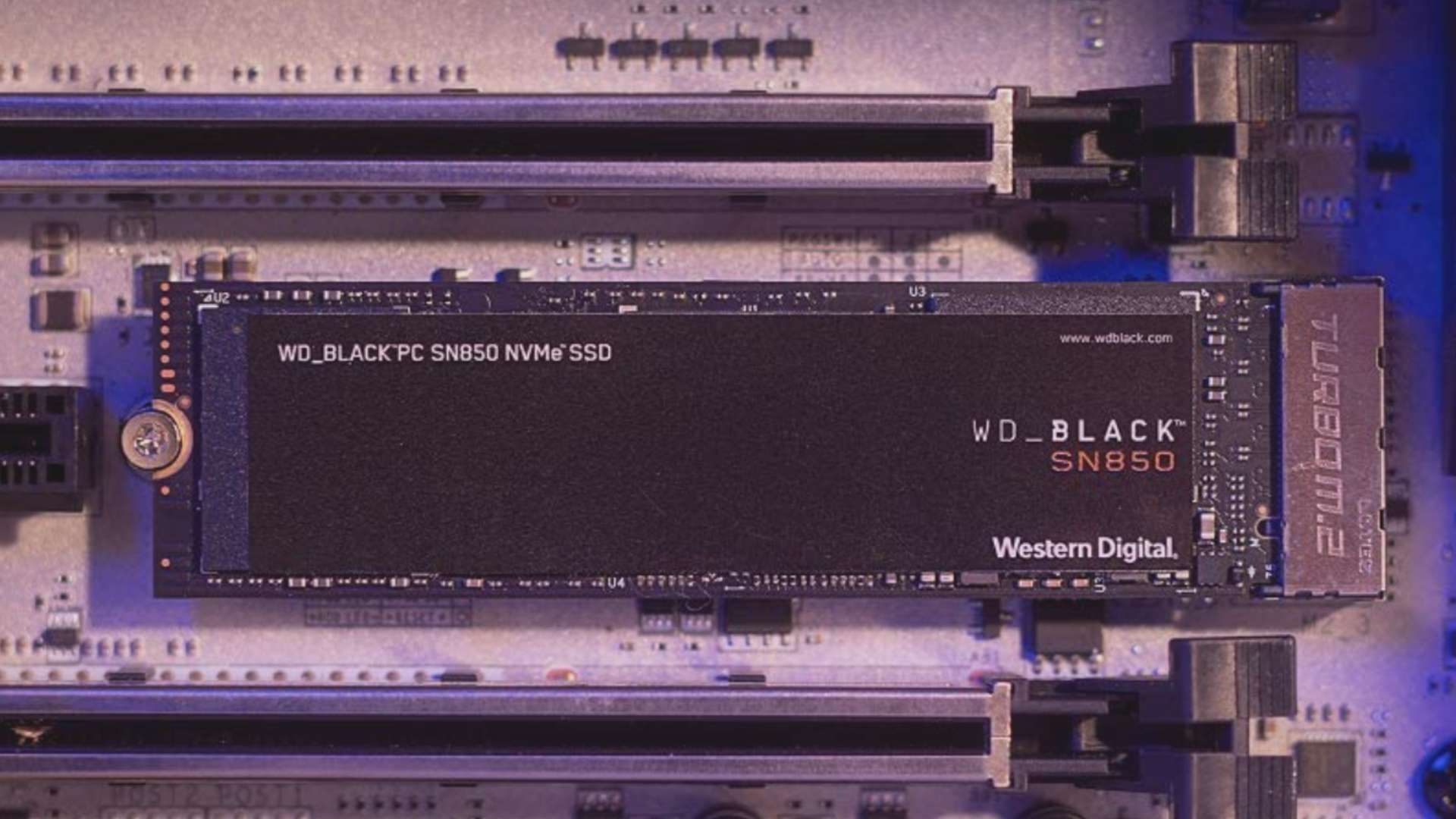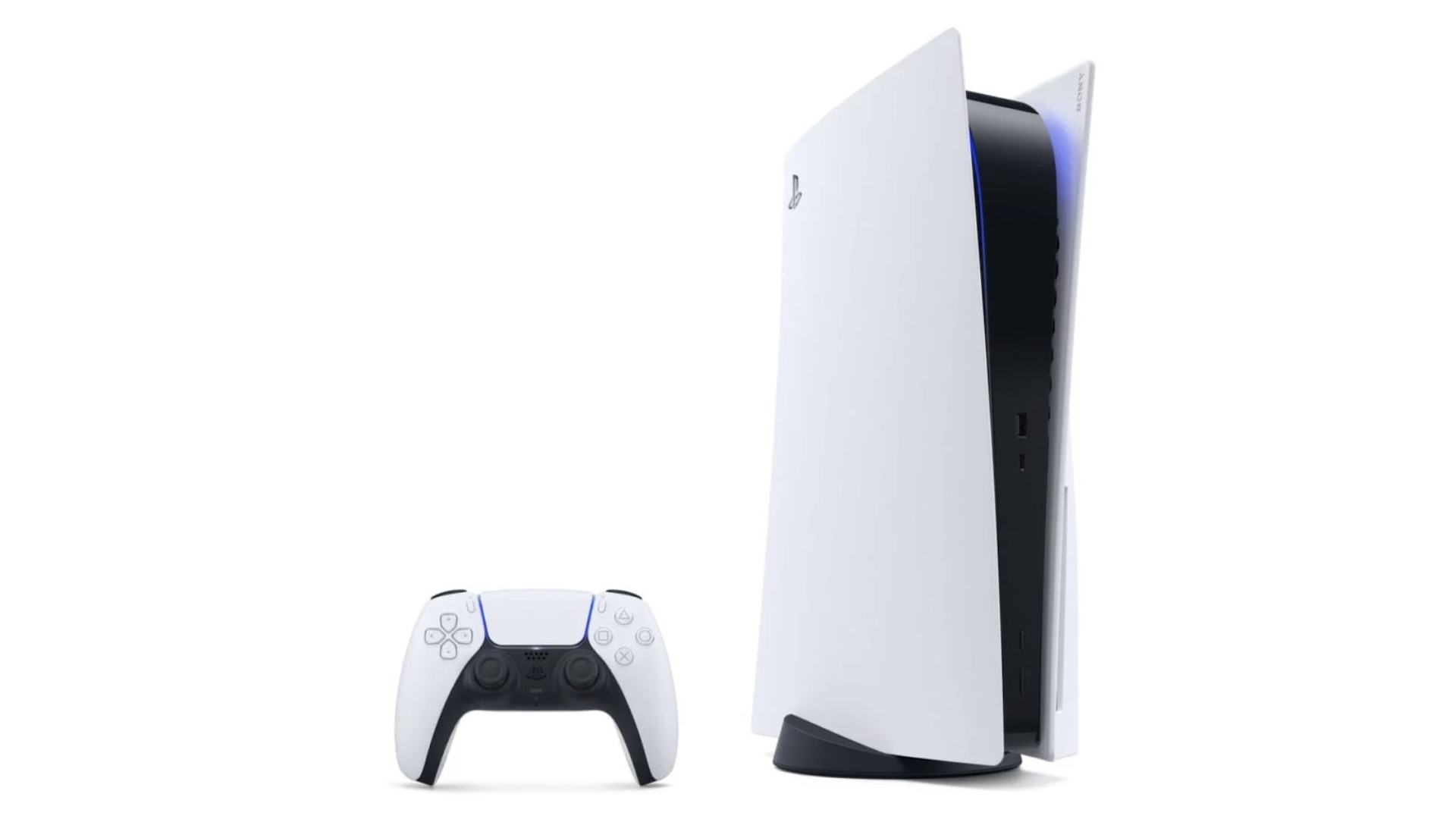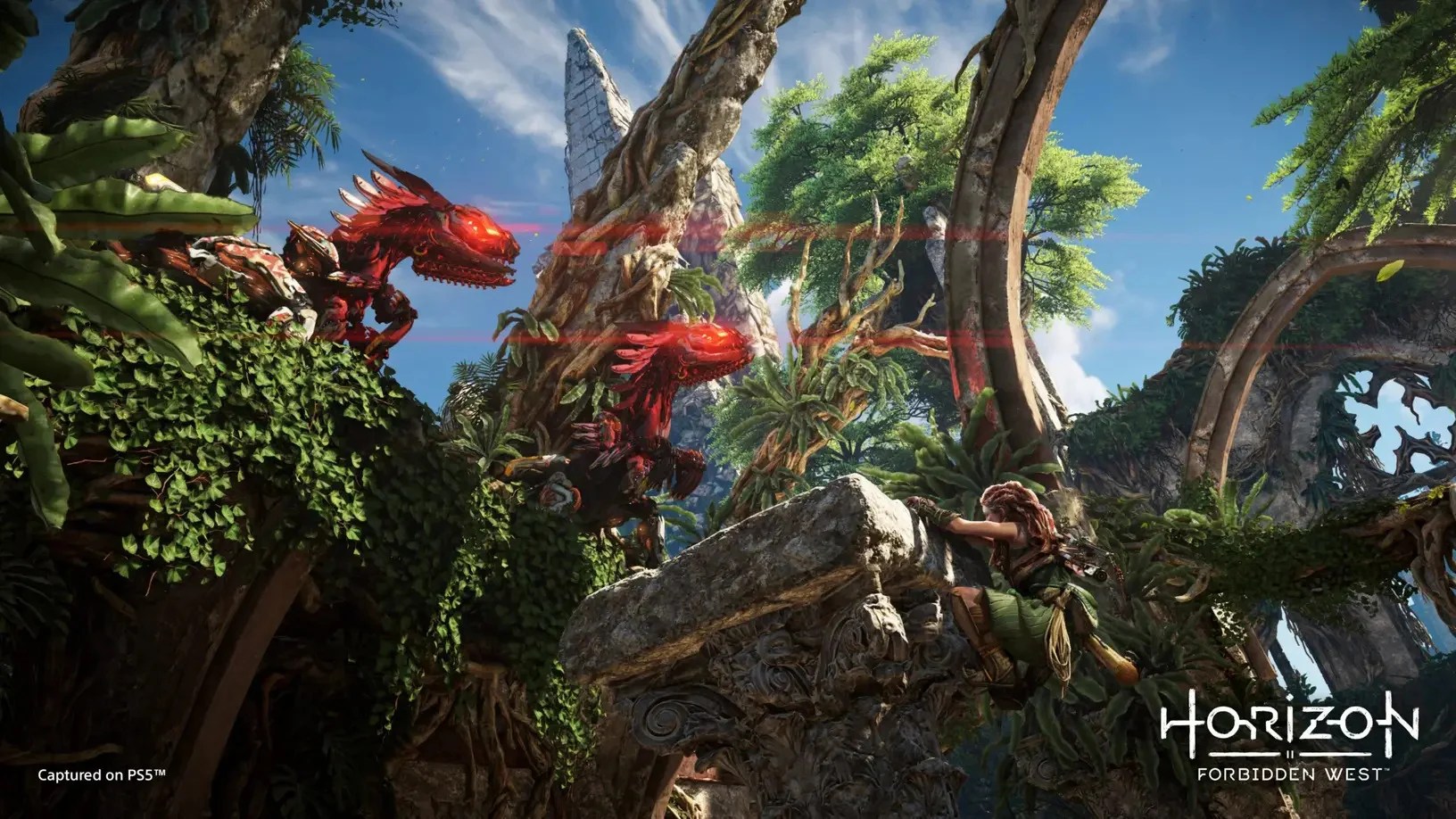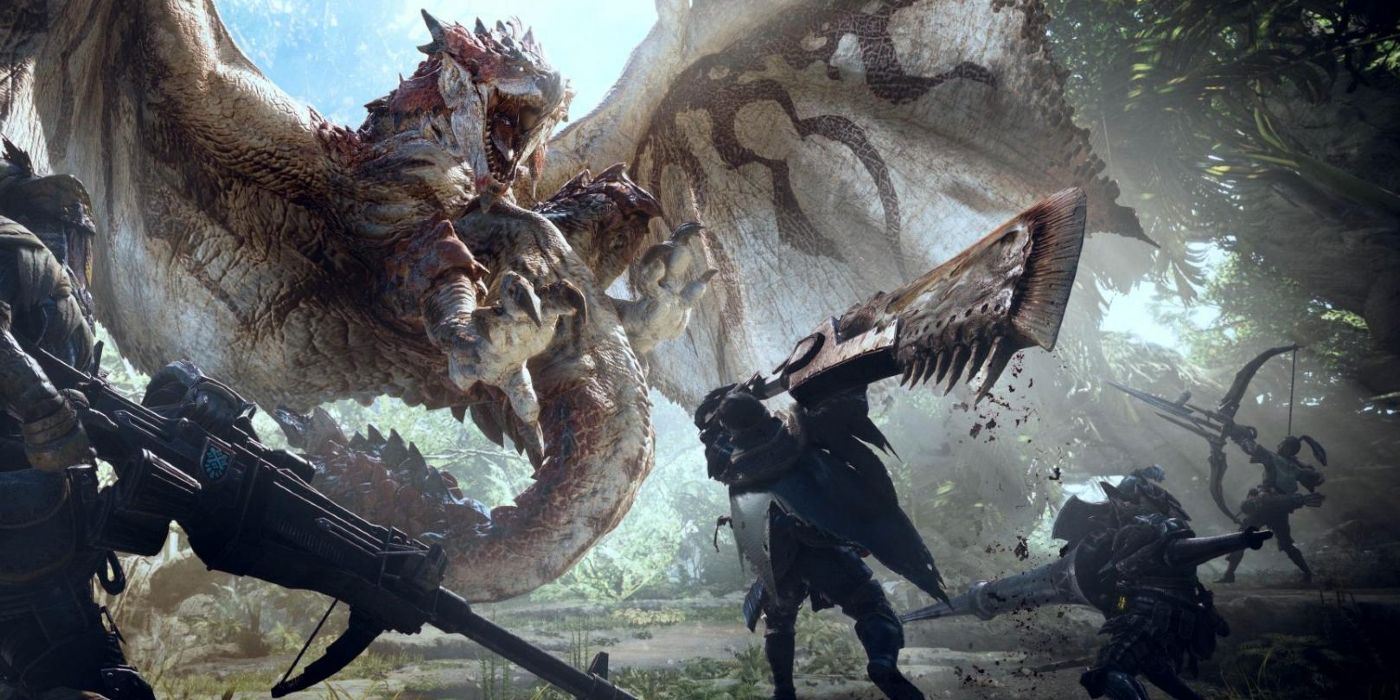

Capcom's Monster Hunter World, soon to be celebrating its three-year anniversary, is still a lively hub for players worldwide. Whether playing alone, with friends, or strangers over the Internet, the game's challenging learning curve and wide variety of available play styles is sure to create a long and prosperous career for any hunter exploring the ins and outs of the world of Astera.
RELATED: Games To Play If You Liked Monster Hunter: World
Most players will stick to weapons that accommodate their style of hunting, while others might master a few in order to complement their allies on team hunts. As hard as it can be to find the best gear, these considerations are vital for those who want to become great players or hone their skills. In both cooperative and solo play, the MHW weapon tier list changes a little bit.
Updated August 14, 2021 by Erik Petrovich: Playing Monster Hunter World is just as much of a unique, incredible experience in both solo and co-op play. Playing with others makes those harrowing moments even more interesting, as friends are experiencing them together at the same time. However, playing solo opens up the challenge factor of the game, pitting the player one-on-one against the game's most vicious monsters. This is not a MHW Iceborne weapon tier list; only those offered in the base game are ranked.
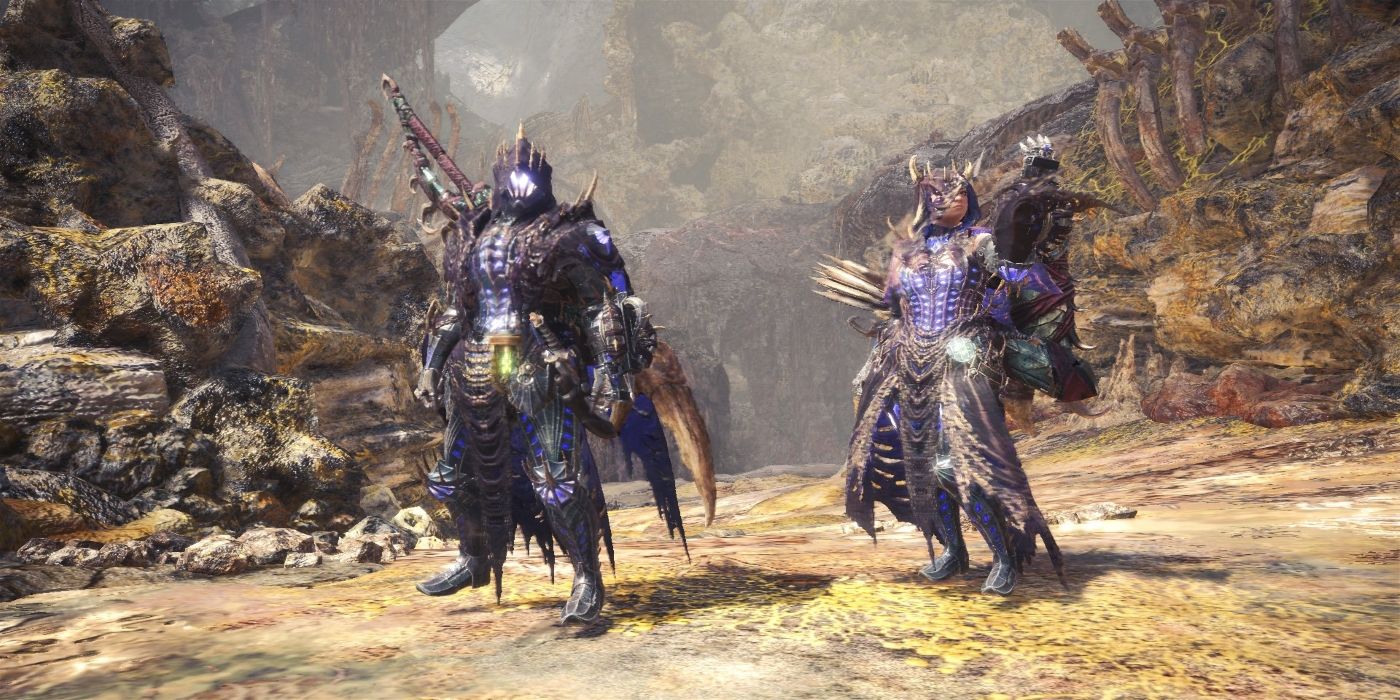
Co-op in Monster Hunter: World is a little convoluted compared to other games. Getting into a lobby with friends is simple enough; however starting missions, events, and other in-game activities together is a bit of a different story. To start a co-op game, make sure to complete the introductory Jagras of the Ancient Forest quest, then head to the Gathering Hub. There will be a notice board next to a woman, the Squad Manager. Interact with her to invite friends to the session. PC players can simply use the Steam Group feature instead.
When in a lobby with a squad, using the Notice Board or Quest Counter will bring up the normal quest screen. However, the quests are limited to what the player posting the quest has available. If a player doesn't have the right requirements for a quest, they won't be able to embark. However, once its been posted, other players can select "Join Quest" to officially join in the group.
Expeditions are a different story. Go through a quest like normal, and instead of returning to Astera, select the option to return to Camp.

- Sword and Shield: Sword and Shield users, while not often frowned at in a large team setting, can usually be replaced with a more valuable damage-dealing build. It doesn't rank highly in the Monster Hunter World weapon tier list, because Charge Blades and Longswords are generally better at the same role.
- Switch Axe: For most of the same reasons as solo play, the Switch Axe is a mediocre replacement for a Hammer or Greatsword user. From some players' experience, clunky failed combos and lessened agility will often make for an embarrassing hunt.
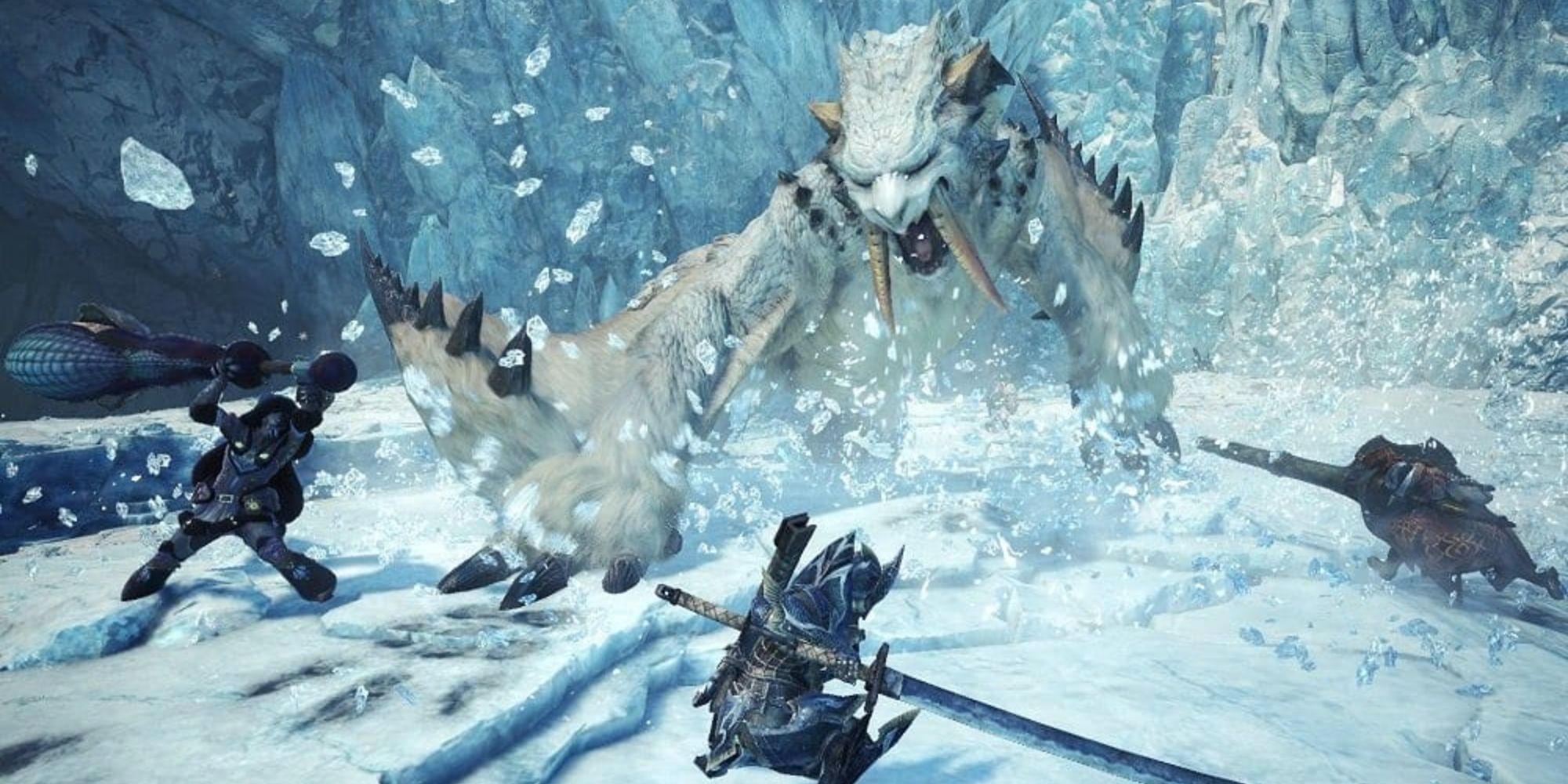
- Insect Glaive: Its aerial combos can be easier to pull off while teammates are volleying attacks; however, the Insect Glaive doesn't attract most teams' chemistry. Some hunters, though, have a special connection to the Glaive and can prove to be great supports for heavy weapons.
- Dual Blades: Dual Blades are a decent alternative to Longswords or Charge Blades. However, low damage per hit means most combos could be better spent with a larger weapon. As far as team play, the Charge Blade or Longsword may be a more useful choice (with regards to cutting tails and such).
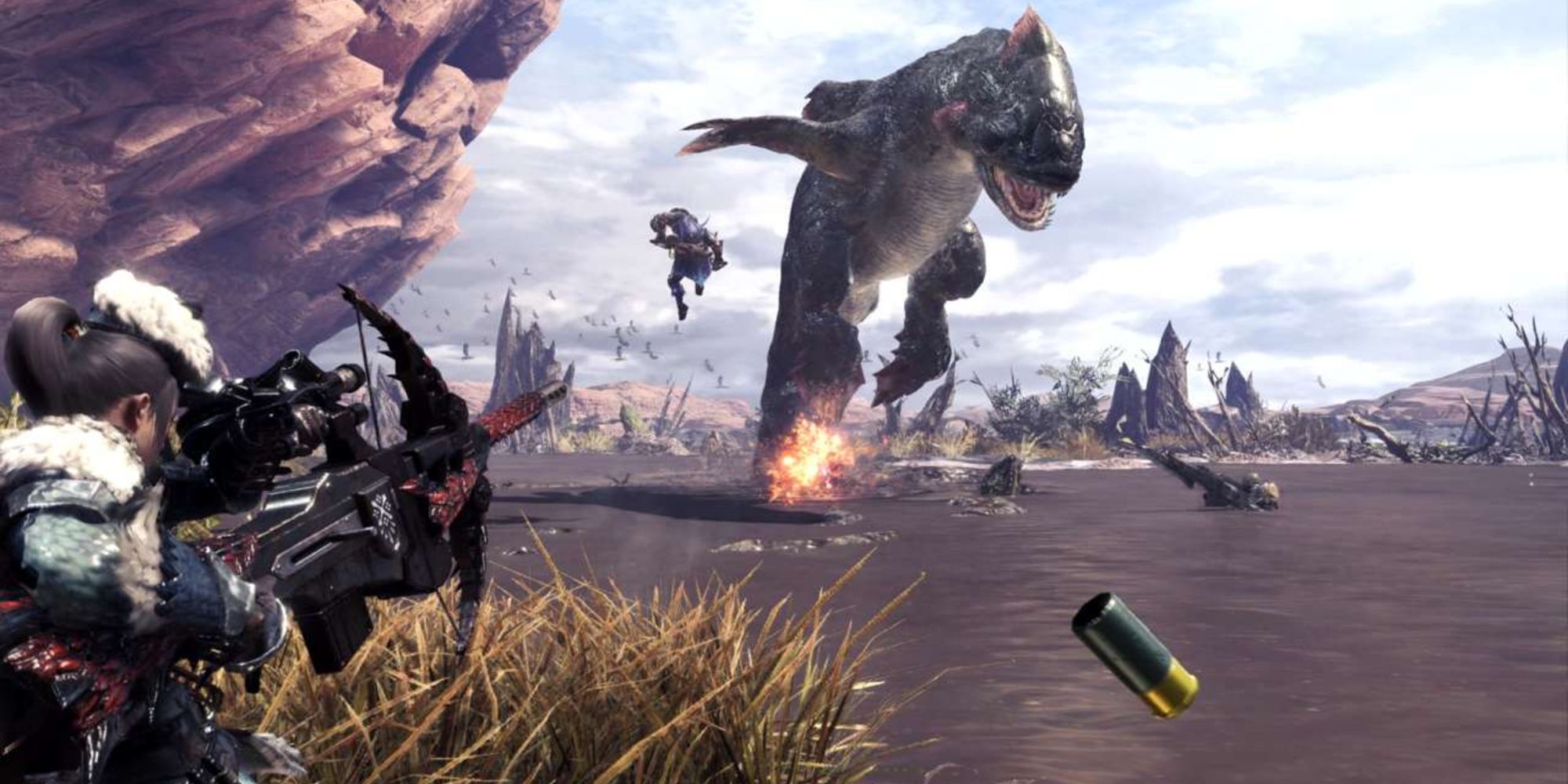
- Light Bowgun: While some players prefer this smaller version, the Heavy Bowgun is generally better for team-based scenarios. Because of the nature of ranged weapons, teammates will already be protective of their support players. The trade-off of dodging ability to damage will become less worthwhile.
- Longsword: For a larger team, medium damage/dex builds can be extremely helpful, getting in smaller combos while the rest of the team either charges attacks or spreads buffs. As mentioned before, these types of players come in handy when directly paired with a Lance or Hammer build.
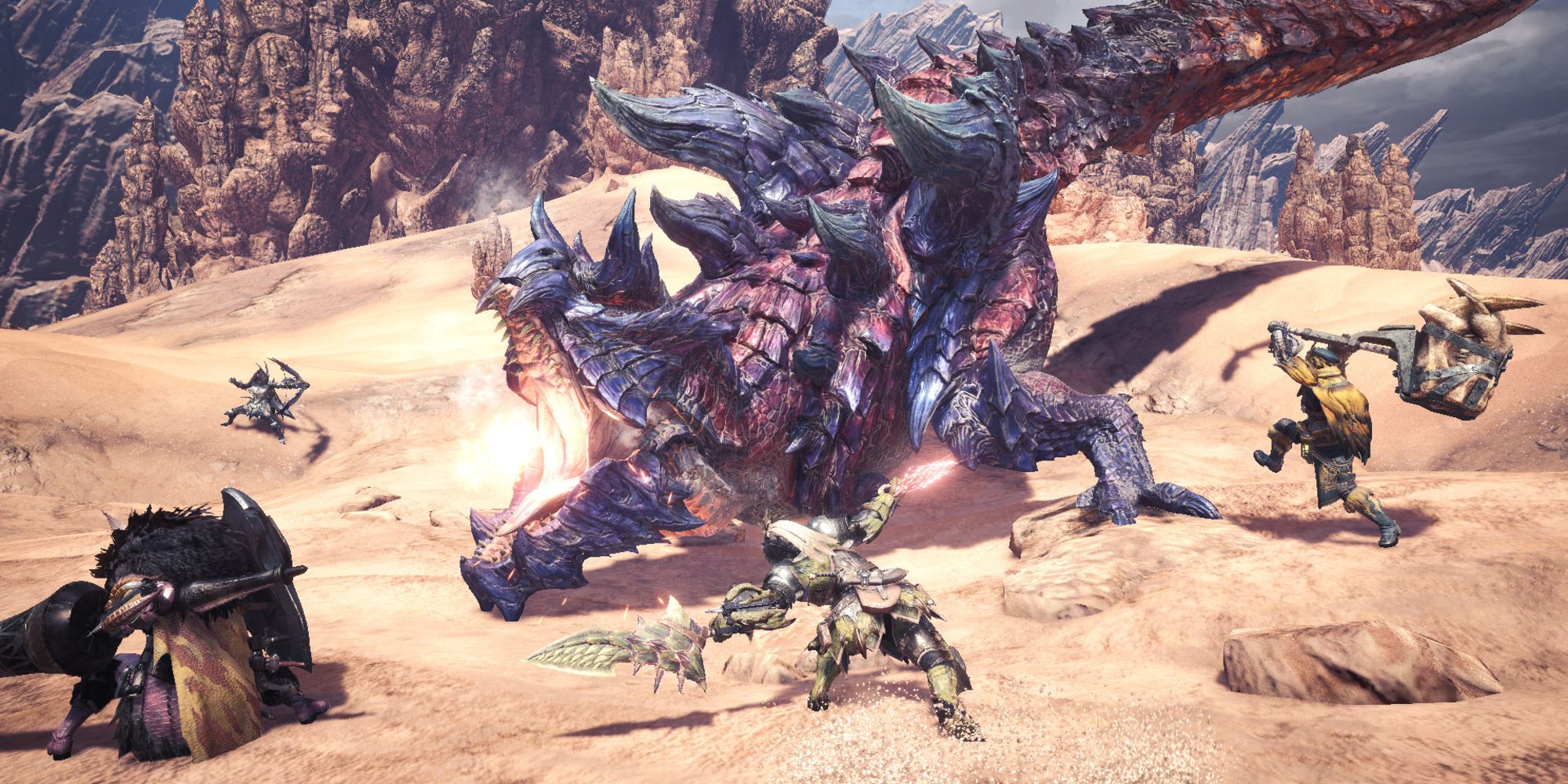
- Bow/Heavy Bowgun: With a combo of close-range builds and Bows, hunting squads can tag-team targets easily, with added status debuffs and more powerful controlled shots. The Light Bowgun, while preferable to some players, usually does less for a team's chemistry when compared to these heavier counterparts.
- Gunlance/Lance:Lance players will find that co-op is more accepting in terms of their tanking methods. Because of the imposed limits, Lances can gain advantage if another player acts as their direct support, distracting or redirecting monsters from trapping them in a purely defensive state.
RELATED: Every Elder Dragon Not In Monster Hunter World: Iceborne
- Charge Blade: The Charge Blade becomes an easy pick-up for new players, and is a perfect medium-high damage attacker. With added distractions from other teammates, the charged combos can be unleashed more easily and output a greater range of destruction. It ranks high on the Monster Hunter weapon tier list because it's both really intuitive to pick up and deals a pretty decent amount of damage. It won't top the charts, but it's far better than most other choices.
- Greatsword: In co-op, the potential of a Greatsword isn't as substantial as a Hammer; however, it's still a valued member of teams that don't already have a tank. With great power comes great responsibility, and the timing of attacks is more important than ever when teammates' lives are on the line. Many will discover this the hard way after missing combos aimed at a swifter target that prefers not to stay in place.
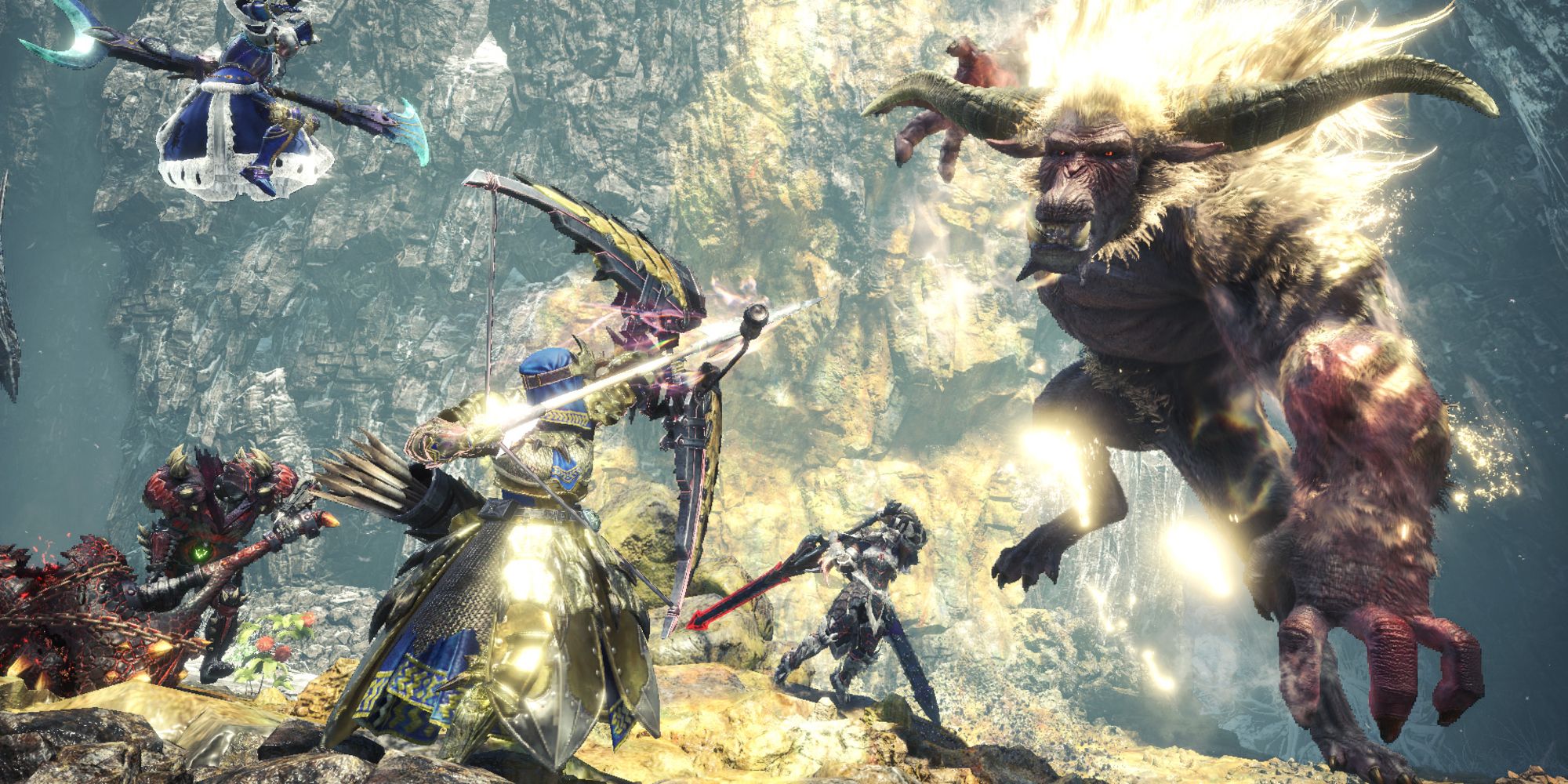
- Hunting Horn: The Hunting Horn is easily considered one of the best complements to a well-balanced hunting team, with buffs galore. Topped with solid heavyweight combos, Hunting Horns aren't just a status support, and can easily prove themselves worthy on the battlefield.
- Hammer: Any hunting party needs their tank, and what better weapon for damage than a Hammer? When paired with agile builds to distract targets, charged combos can topple any beast quickly and efficiently. When a team is in dire straits, Hammer users rise to the challenge and quickly become the heroes of the hunt, especially when backed by a good ranged support.

Playing Monster Hunter World by oneself is by no means a bad way to experience the game. If anything, it makes everything a little more challenging. Playing co-op makes for a fun time with friends, sure. On the other hand, playing on one's own makes "boss" fights feel more epic and one-on-one fights much more involved. It forces the player to consider their placement, skill, and weapon choice much more.
Players still have to go through the process of posting a quest and starting expeditions the same way as in co-op (there's no open world aspects in Monster Hunter World). When playing alone, it's vital to make sure armor is upgraded and suited to monsters that players will be taking on. It's also very important to keep the Palico companion fully armored and upgraded at the same rate. A lot of the time, Palicoes end up being de-facto tanks for the player, reducing the threat they generate against monsters.
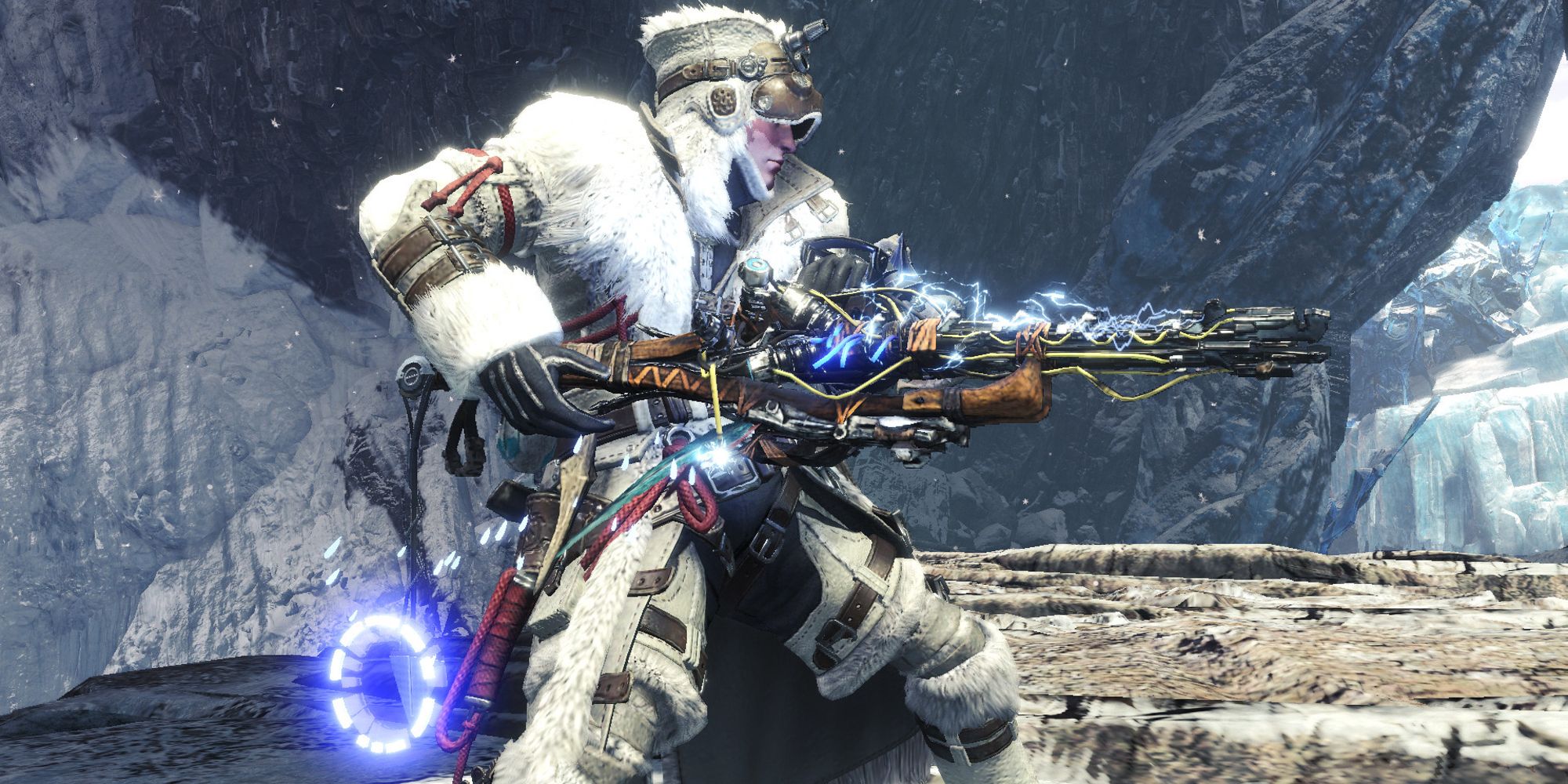
- Sword and Shield: Experienced hunters prize the versatility of the Sword and Shield, while beginners often find it a good starter weapon while learning. Many who live, breathe and cosplay Monster Hunter, however, will find that the Charge Blade provides a superior build, with perks from Sword/Shield and Greatswords combined.
- Hunting Horn: Another co-op based weapon, the buffs included with the Hunting Horn, while useful, don't reach full potential solo. The time it takes to crank out songs won't help lone hunters, as they find themselves charged by any monster in sight. In terms of the solo Monster Hunter World weapons tier list, avoid this weapon at all costs.
- Light/Heavy Bowgun: While the Bow also adheres to a co-op based style, Bowguns are slightly more limited in their combined range, damage, and buffs. A speedier target will render players unable to volley attacks. Meanwhile, larger monsters will be little more than damage sponges to the quick shots taken between dodging and running.
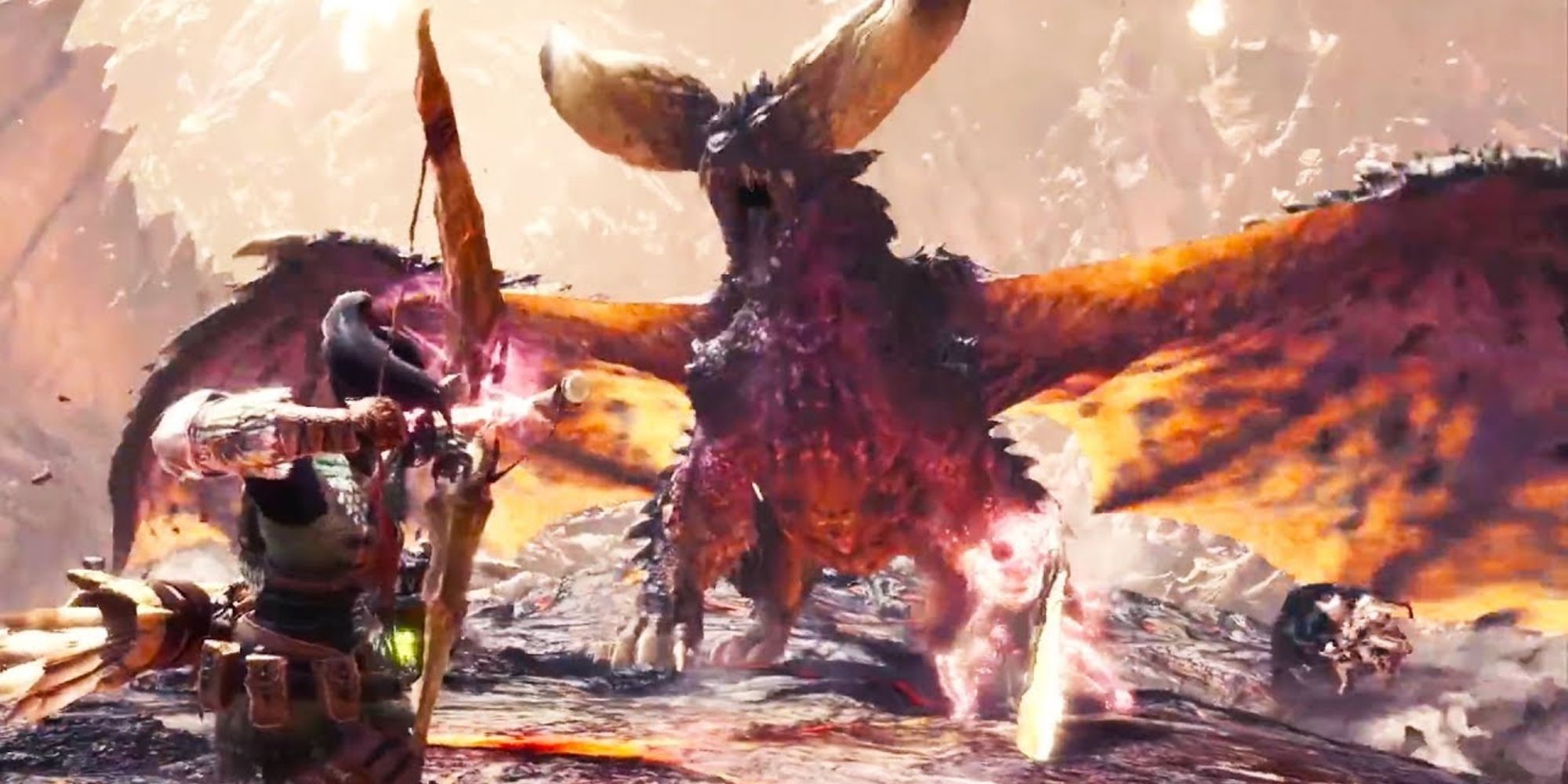
- Bow: Most players will find themselves intimidated by the ranged weapon roster when first starting, but the Bow makes for a great learning experience. Especially when paired with a focused Palico team, they keep a little distance between a player and the monster.
RELATED: Monster Hunter Games to Play to Prepare For MH Rise
- Gunlance/Lance: Both variations make formidable tank weapons. The only disadvantage is a more limited range in single-player, as immobility makes for a tough hunt if matched with a speedy monster. With coordination and timing, though, they can still be incredibly effective.

- Switch Axe: The Switch Axe, while being a formidable combo machine and damage buffer, just isn't quite as impressive as the Greatsword. In terms of design, the Switch Axe falls just short of being a heavy-load alternative to the Charge Blade, minus the satisfaction of a well-placed shield-parry combo.
- Insect Glaive: The Insect Glaive is an enticing pick for newcomers and veterans alike. While the range of combos and swift attack options are fun to unleash en masse, limited damage and high learning curves can be less agreeable relative to other options. In addition, players will be spending a lot of time in the air. While satisfying to achieve, this is harder to pull off and attempts can easily fall flat.
- Dual Blades: Similar to Longswords, Dual Blades' agility is great for any player able to tap into the weapon's nuances. Combos can be fun to pull off, but damage output usually means only being allowed small hits before having to run away and dodge attacks. This can make some tougher, higher ranked hunts against the most powerful opponents even more challenging.
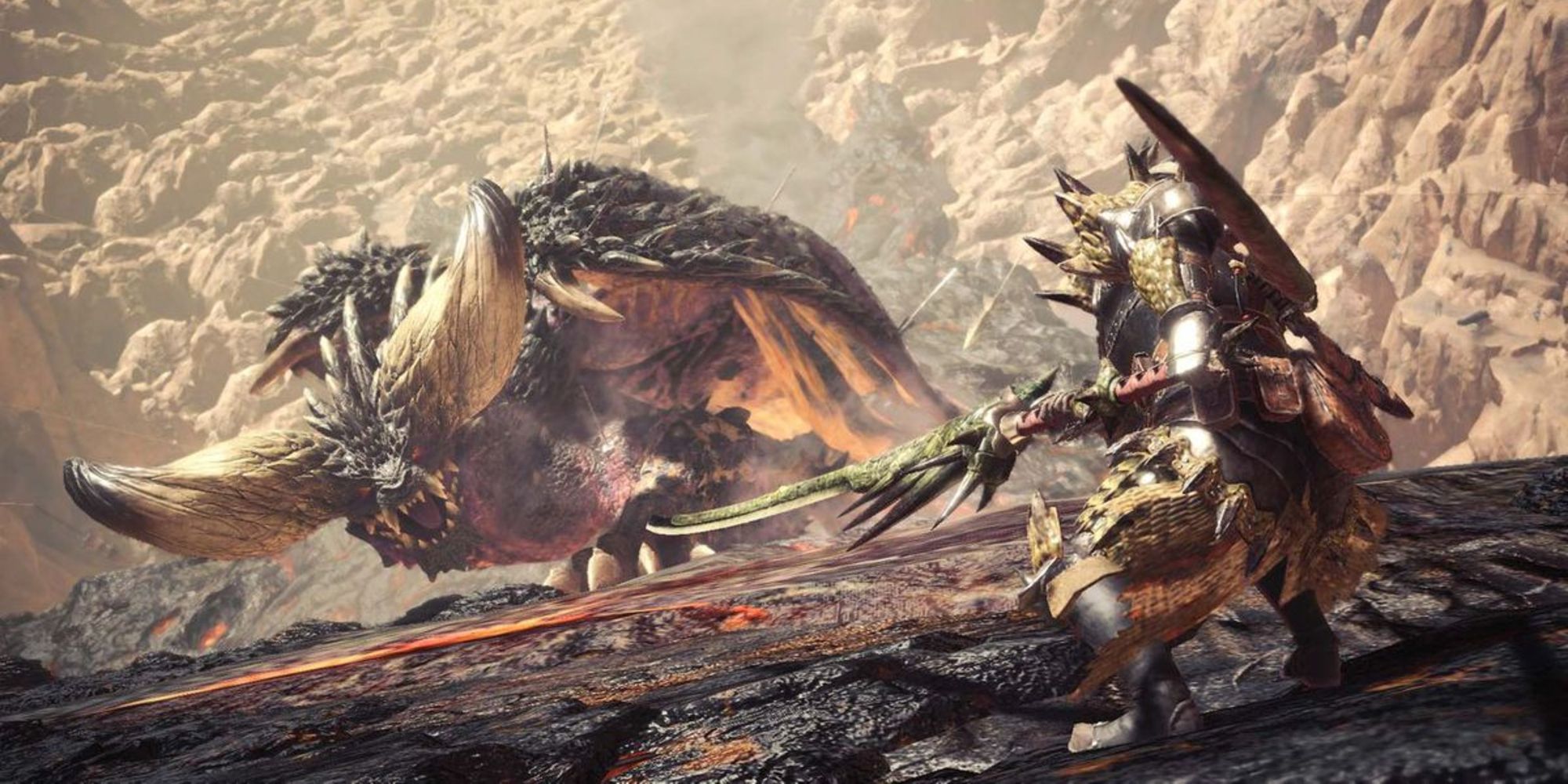
- Hammer: This weapon is the perfect choice for a tank player. Similar to Greatswords, the Hammer is an ideal choice for not only dealing damage, but toppling large opponents. For solo play, however, the Hammer is more divisive due to its low-range and precise timing required to make the most out of combat.
- Longsword: Another great alternative to Greatswords, beginners will find themselves attracted to the sleek allure of the Longsword. A blend of agility and combo damage, a hunter with the right build will find themselves falling fast in love with the swift and elegant nature of this weapon.
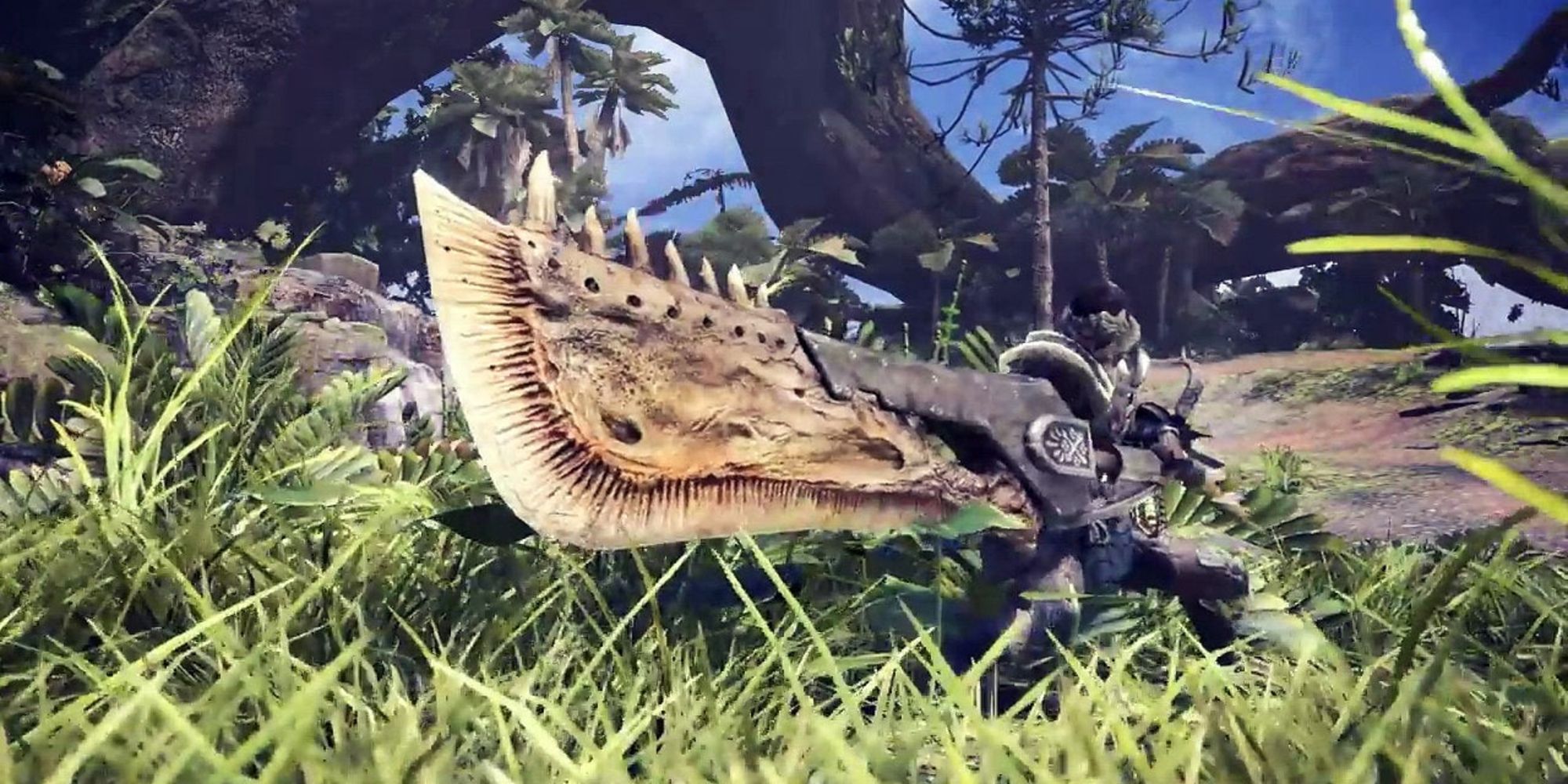
- Charge Blade: Many players prefer the Charge Blade to the classic Sword and Shield. Not only does the Charge Blade allow unique buffs and attacks, but it makes for a fantastic combo of Sword/Shield's agility and Greatsword's heavy blows and defense.
- Greatsword: A modern classic, the Greatsword is always a reliable partner in combat when used correctly. With mixed defense and heavy combos, a seasoned player can make their way out of tough situations easily. It's a tour de force in damage, as its limited reach helps players to take advantage of close combat when approached by larger targets.
NEXT: Monster Hunter Rise's Monsters May Have Been Leaked

